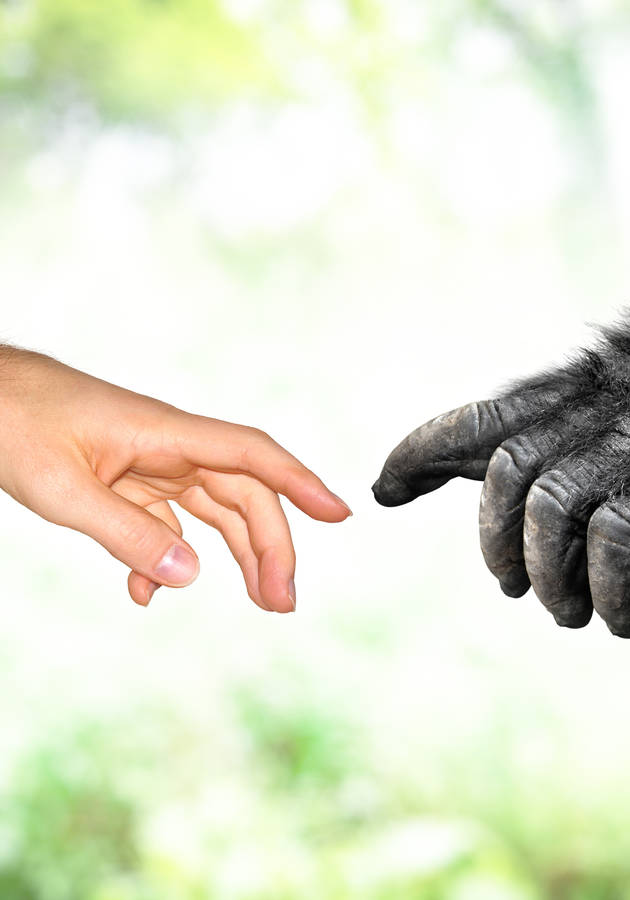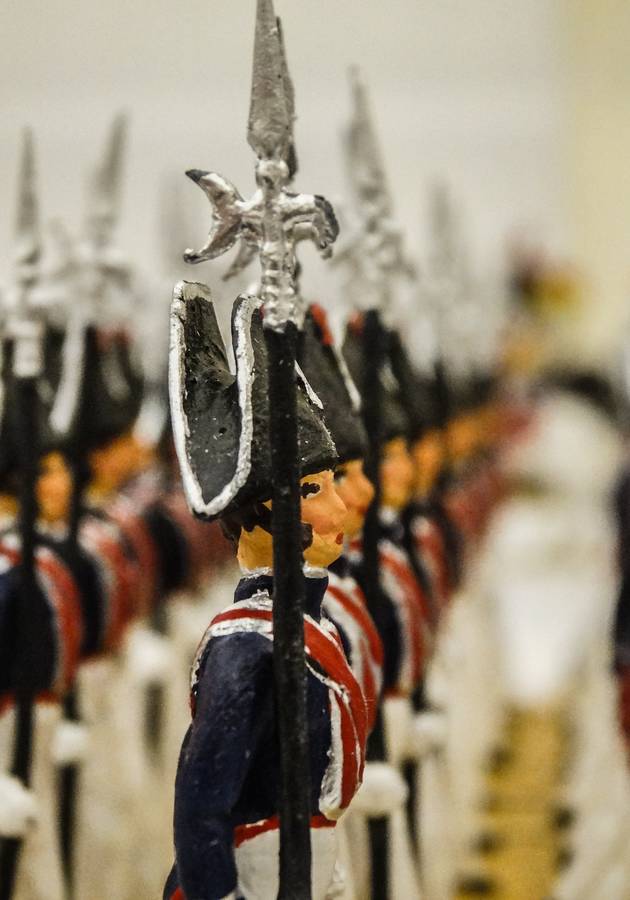First published on November 24, 1859, Charles Darwin’s magnum opus, “On the Origin of Species,” is, quite possibly, the most influential nonfiction book ever written.
Composed primarily with nonspecialist readers in mind, the book attracted widespread attention upon hitting the shelves, not the least because, for the first time in history, an eminent scientist had presented a body of evidence in favor of a self-created – and self-creating – intelligent, living universe.
So, get ready to discover what makes “On the Origin of Species” both such an important and such a controversial book even a century and a half after its publication – and why its main discovery that all life on Earth evolved from a “universal common ancestor” is beyond debatable.
Variation under domestication
Even before Darwin, naturalists could observe that individual members of a species may differ from each other and were able to deduce that, in time, their differences should become more visible. However, generally, they considered these differences to be both unimportant and limited deviations from a certain archetype, fixed as such in the mind of God ever since time immemorial. Horses can be brown with lanky legs or white with lavish manes – but, either way, they are horses, that is, variations of an original divine model of a horse that contains all of these traits in itself.
Darwin was one of the first people to realize that the secret of speciation – that is, the formation of new and distinct species over time – lies hidden beneath these small variations among individual members of the same species. “If we add millions of years to the equation,” he pondered, these “small differences should inevitably become big enough to lead to the creation of new species.”
To understand how this process might work in nature, three years before, he published “On the Origins of Species,” Darwin started crossbreeding pigeons. He was fascinated to discover that a then-recently deceased pigeon breeder by the name of Sir John Sebright was able to produce any given pigeon feather in three years, and any type of head and beak in six.
Darwin discovered, through research and his own experiments, that this might not have been an exaggeration. In fact, it is not even that difficult to breed a pigeon of your liking. If, for example, one wants a pigeon with a large tail, all one has to do is select the pigeons with the largest tails of one generation and mate them. Do this over the course of several generations, and you’ll get a pigeon with an almost “unpigeonlike” tail, such as the fantail pigeon that has 30 or even 40 tail-feathers, at least three times as much as the normal number in all members of the great pigeon family!
Variation under nature
What struck Darwin the most was the fact that all of the breeders with whom he had the pleasure to converse – or whose treatises he had the privilege to read – were firmly convinced that all pigeons couldn’t have descended from one common ancestor. To them, they looked just that diverse. However, with so many differences between the numerous breeds of pigeons, naturalists – even back in the 19th century – knew from both observations and research that all of them had descended from one common species of rock-pigeon.
But, really, what is the difference between a variation and species? Why are the fantail pigeon and the rock-pigeon – or, say, the chihuahua and the English Mastiff – as different as they are, just two varieties of the same species, while the horse, the donkey and the zebra, as similar as they might look to most people, considered three different animals? The answer that Darwin came up with was nothing short of revolutionary: well, the last ones are just more stable, more strongly marked, and more permanent varieties. In other words, the only difference between a variation and a species is in degree, not in kind.
But if so it is, wouldn't mankind, acting as God, have created different species of pigeons, cats, and dogs in the span of just a few thousand years? What then should one say of the power of nature to speciate throughout millions of years? Unlike man, nature had much more time to do this; also, unlike man, nature could change so much more than the number of tail feathers.
The struggle for existence and natural selection
So, whether wanting this role or not, nature is, by definition, a breeder: though not consciously like men, it too determines which species would mate and which would not – if not via other mechanisms, then certainly by making it uncomfortable for some variations to survive. For example, a penguin would never survive in the Sahara Desert, but it is perfectly tailored for the climate of Antarctica.
Nature didn’t have to consciously select penguins to mate and become the way they are – penguins couldn’t have evolved in any other way, because, if they had, they would have probably died out. What Darwin deduced is that this probably already happened: many variations of many animals simply couldn’t survive certain environments and are now extinct; the variations that did stay alive became, through mating, more stable and more permanent – that is, they developed into new species.
Many people doubt the validity of this theory, but nothing but a few conditions need to be satisfied for variation under nature to occur. And these conditions are all inevitable facts of existence and are linked in this simplified chain of events:
- Organisms reproduce and, through reproduction, they pass some of their traits to other generations.
- There is a limited amount of resources, so not all organisms can be supported.
- Some organisms are better suited to get to these resources than others and, thus, they have a better chance to not die out of hunger before reaching reproductive age.
- Consequently, these better-suited organisms will be the ones to get a chance to mate and pass on their superior genes on to the next generations.
- In other words, the traits that will be passed are necessarily the ones that would have allowed the organisms to survive in the first place – i.e., the traits that made them better suited for a certain environment.
- In time, these traits will inevitably become dominant in the population and effectively alter their appearance – if only a bit.
- But then the process starts all over again because nature continually changes, and organisms continually have to adapt.
- As a result, species constantly evolve, and the ones that remain, at any point in history, are the ones best adapted for a certain place.
“Owing to the struggle for life,” Darwin sums up this few-step process, “any variation, however slight and from whatever cause proceeding, if it be in any degree profitable to an individual of any species, in its infinitely complex relations to other organic beings and to external nature, will tend to the preservation of that individual, and will generally be inherited by its offspring. The offspring, also, will thus have a better chance of surviving, for, of the many individuals of any species which are periodically born, but a small number can survive.” And this is how natural selection works.
The common ancestor
So, in short, nature unconsciously selects traits regarding their adaptability, and this, in time, causes one species to branch out into a few related but distinct variations, in much the same manner that human crossbreeding has resulted in so many different breeds of dogs and pigeons. Thus, nature has “created” horses, zebras, and donkeys – all of them stemming from a single common ancestor that, under different natural circumstances, evolved different dominant traits.
As you can see, Darwin’s theory was able to immediately explain the similarities between different species, of which naturalists were aware at least ever since Swedish botanist Carl Linnaeus categorized all plants and animals into a neat taxonomic classification system. It became obvious that what the hierarchical nature of this system hid between its branches was a magnificent “tree of life.” Simply put, the more similar species were, the more recent their common ancestor had to be.
But how far back should we go? Darwin didn’t know, but he speculated that the answer is: all the way to the end. “I should infer from analogy,” he wrote, “that probably all the organic beings which have ever lived on this earth have descended from some one primordial form, into which life was first breathed.” And he couldn’t have been more enthusiastic over this discovery: “There is grandeur in this view of life, with its several powers, having been originally breathed into a few forms or one; and that, whilst this planet has gone cycling on according to the fixed law of gravity, from so simple a beginning, endless forms most beautiful and most wonderful have been, and are being, evolved.”
Difficulties for the theory
Even before “On the Origins of Species” was published, Darwin was aware that he would have to deal with a lot of detractors and disparagers once the book hit the shelves. After all, there was no place for a creator in his theory; on the contrary, in fact: there was just enough evidence that a godlike creator might not even exist. So, he reserved a large part of the book to tackle probable doubts and negative criticism in advance, laying out in-depth answers to a few questions that his theory of natural evolution and descent with modification could provoke in its readers. These are the two more important.
Transitional forms
The first question laid to rest by Darwin has been repeated to this day by numerous creationists with remarkable obduracy: “Why, if species have descended from other species by insensibly fine gradations, do we not everywhere see innumerable transitional forms?”
There are several reasons. First of all, it is because natural selection is incredibly slow and doesn’t create more than a few visible species at any given time and in any given place. Secondly, it is because natural selection, by definition, tends to create newer and better-adapted varieties; in other words, most transitional versions of a species now existent must have grown extinct at some point in history. Finally, it is because natural selection favors stable and more permanent variants.
So, just like you can find VCRs now only at some garage sales, you can only find ancient transitional forms of the surviving animals only underground. Darwin was so farsighted that he guessed correctly that the geological record available at the time must be incomplete. Magnificently, just two years after “On the Origin of Species” was published, his farsightedness was vindicated by the discovery of the Archaeopteryx, a birdlike dinosaur that was almost immediately recognized as a transitional form between nonavian dinosaurs and birds.
Useless organs
The second problem Darwin dealt with was this: “Can we believe that natural selection could produce, on the one hand, organs of trifling importance, such as the tail of a giraffe, which serves as a fly-flapper, and, on the other hand, organs of such wonderful structure, as the eye, of which we hardly as yet fully understand the inimitable perfection?”
Yes, we can. The existence of such unimportant organs as the giraffe’s tail, rather than a flaw, is, in fact, a further confirmation of Darwin’s theory. Namely, if an organism doesn’t need some part of its body now, then why is it there in the first place? The theory of natural selection can explain: it is a remnant of some past variation. For example, a tail might have been a crucial survival advantage for the ancestor of today’s giraffes because, say, it lived in places where flies transmitted deadly diseases. Now it is nothing more but a testimony of the historical development of this animal.
Indeed, whether in giraffes or in people (think of your appendix, for example), vestigial structures make no sense whatsoever without evolution, in the same sense that the spelling of some English words makes no sense without knowing that they have originated from Latin or French. In other words, if you discount natural selection, you’re left with a supreme creator that fashions evidently imperfect beings with designer’s flaws and with pretty much similar parts across different classes. Now, why would he do that?
Final Notes
Richard Dawkins, one of Darwin’s worthiest modern admirers, states at the beginning of “The Blind Watchmaker” that “On the Origin of Species” practically solved the greatest mystery of all: our own existence. Very few scientists would now beg to differ.
And when a book does that, no superlative adjective is sufficient to describe its intrinsic worth and merits, its influence and significance. We won’t even bother trying to find one: “On the Origin of Species” is beyond any comparison.
12min Tip
Don’t let creationists confuse you: though a theory, evolution is a scientific theory. And that means it is virtually an indisputable fact.





























